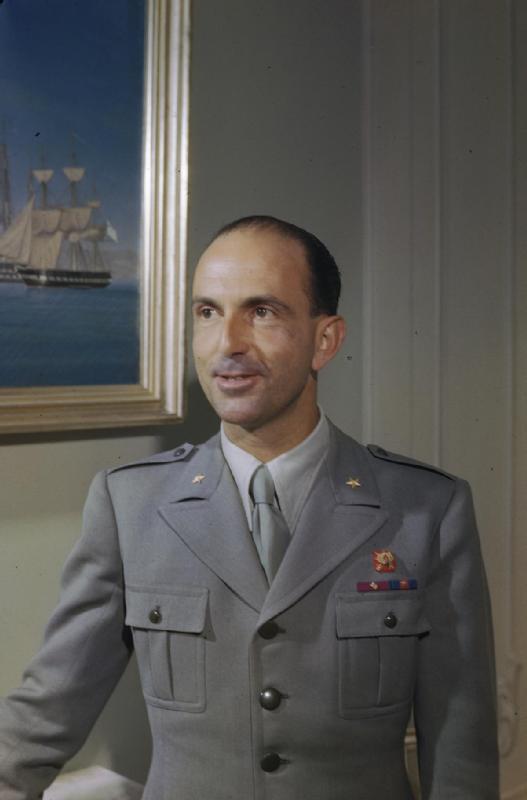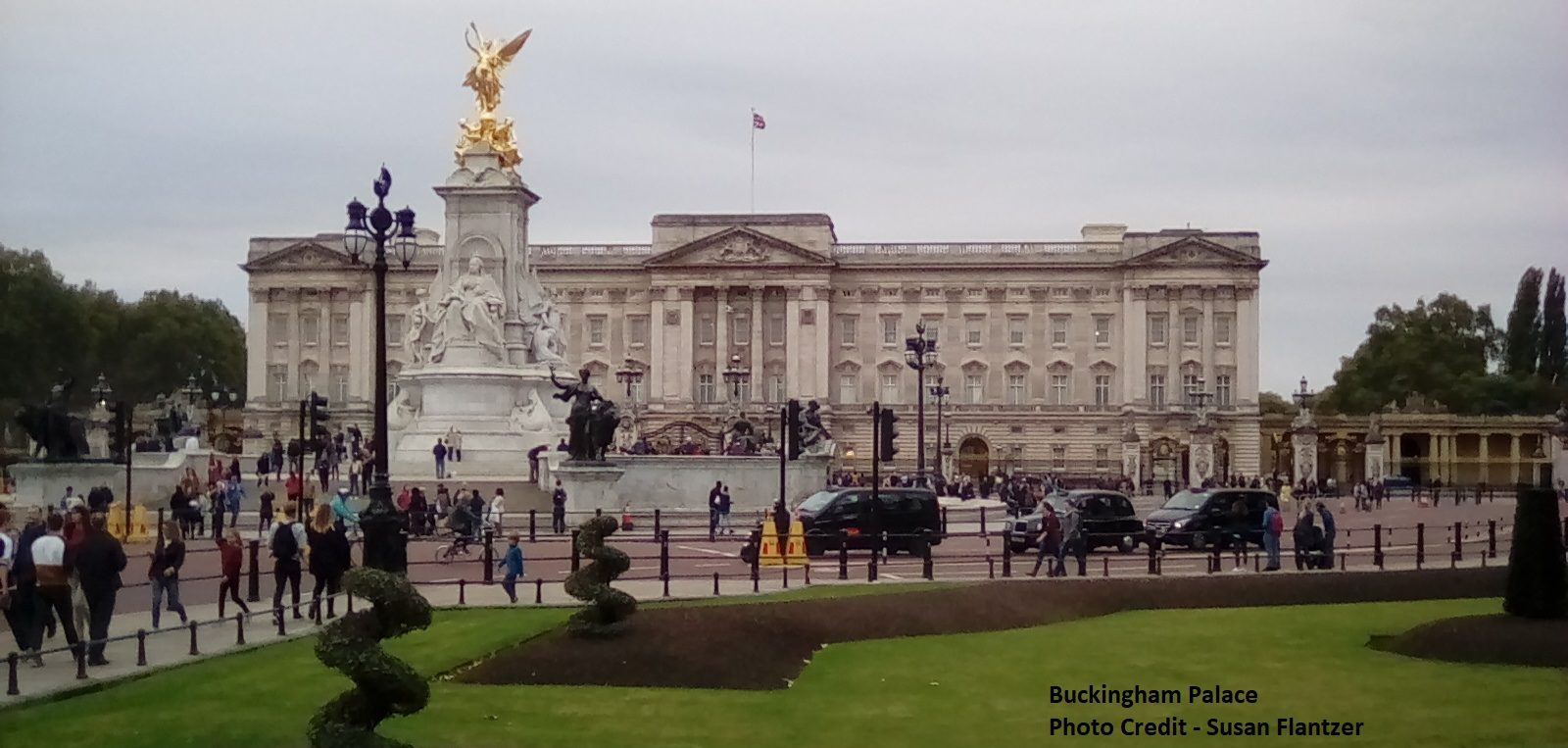by Scott Mehl © Unofficial Royalty 2016

King Umberto II of Italy; Credit – Wikipedia
King Umberto II was the last monarch of Italy, reigning for just 34 days. He was born Prince Umberto Nicola Tommaso Giovanni Maria of Savoy just before midnight on September 15, 1904, at the Castle of Racconigi in Piedmont, Italy. Umberto was the third child, and the only son, of King Vittorio Emanuele III of Italy and Princess Elena of Montenegro. He had four siblings:
- Princess Yolanda (1901 – 1986) – married Giorgio Carlo Calvi, Count of Bergolo, had issue
- Princess Mafalda (1902 – 1944) – married Prince Philipp of Hesse, had issue, died in Buchenwald, a Nazi concentration camp
- Princess Giovanna (1907 – 1943) – married Tsar Boris III of Bulgaria, had issue
- Princess Maria Francesca (1914 – 2001) – married Prince Luigi of Bourbon-Parma, had issue
Two weeks after his birth, Umberto was created Prince of Piedmont by Royal Decree. He was christened in the Pauline Chapel of the Quirinal Palace in Rome, Italy on November 4, 1904. Wilhelm II, German Emperor and King Edward VII of the United Kingdom were his godparents.

Umberto with his grandmother, Queen Mother Margherita, c1919. source: Wikipedia
Umberto was educated privately at home by several tutors and also received rigorous military training. He attended the Military Academy in Rome from 1918-1921, becoming a General in the Italian Army.
The engagement of Umberto and Princess Marie-José of Belgium was announced in Brussels, Belgium on October 24, 1929. She was the daughter of King Albert I of the Belgians and Duchess Elisabeth in Bavaria. On the day of the engagement, Umberto was the target of an assassination attempt while placing a wreath at the Tomb of the Unknown Soldier. Fortunately, the assailant missed and Umberto was not harmed.

Umberto and Marie-José during the marriage ceremony; Credit – Wikipedia
Umberto and Marie-José married on January 8, 1930, in the Pauline Chapel at the Quirinal Palace in Rome, Italy. Following the service, they were received by Pope Pius XI, a sign of improved relations between Italy and the Holy See. After a honeymoon, they settled initially at the Royal Palace of Turin before moving to Naples the following year. The couple had four children:
- Princess Maria Pia (born 1934) – married (1) Prince Alexander of Yugoslavia, had issue; (2) Prince Michel of Bourbon-Parma, no issue
- Prince Vittorio Emanuele, Prince of Naples (born 1937) – married Marina Ricolfi-Doria, had issue
- Princess Maria Gabriella (born 1940) – married Robert Zellinger de Balkany, had issue
- Princess Maria Beatrice (born 1943) – married Luis Rafael Reyna-Corvalán y Dillon, had issue
Umberto continued with his career in the army while also representing the monarchy. He and his wife were often the official representatives at foreign royal events, the first being the marriage of his sister, Giovanna, to Tsar Boris III of Bulgaria in October 1930.
At the beginning of World War II, Umberto successfully led the Army Group West in the Italian invasion of France. Following France’s defeat, Italian dictator Benito Mussolini barred Umberto from active service, however, he did create him Marshal of Italy.

Umberto visiting troops during World War II in May 1944; Credit – Wikipedia
In June 1944, King Vittorio Emanuele III transferred most of his powers to Umberto. That June, after Rome was liberated, he transferred his remaining powers to Umberto who was named Lieutenant General of the Realm. His father, however, remained King. Just two years later, with an upcoming referendum to decide on the continuation of the monarchy, King Vittorio Emanuele formally abdicated on May 9, 1946, hoping to help ensure a positive result in the vote. Umberto took the throne as King Umberto II. However, it was too late to do much good. The referendum was held on June 2, 1946, with the majority voting to become a Republic. Umberto had promised to accept and support the result and encouraged the Italian people to support the new government. On June 12, 1946, King Umberto II of Italy was formally deposed and left Italy. He settled in Cascais, Portugal, where he would live for the remainder of his life. However, his wife, Queen Marie-José, soon left and settled near Geneva. The couple led separate lives but remained married.
In exile for nearly 37 years, Umberto remained involved with the Italian people despite being banned from ever setting foot on Italian soil. He supported numerous causes and charities and was known for welcoming all who made the trip to Portugal hoping to speak with their former sovereign. An avid collector of military medals and memorabilia related to the House of Savoy, Umberto wrote a book on the medals of Savoy. He also traveled often and made many visits to his daughter Princess Maria Beatrice and her family in Mexico.
On March 18, 1983, King Umberto II died in a hospital in Geneva, Switzerland. Despite the nearly 37 years since he sat on the Italian throne, his funeral was attended by members of most of the reigning and non-reigning royal houses of Europe. Per his wishes, he was buried at the Hautecombe Abbey in Savoy, France, the traditional burial site of the House of Savoy. In his will, King Umberto bequeathed the famed Shroud of Turin, up until then owned by the House of Savoy, to the Holy See. Queen Marie-José was buried at his side following her death in 2001.

Tomb of King Umberto II and Queen Marie José, Hautecombe Abbey. photo: Wikipedia
This article is the intellectual property of Unofficial Royalty and is NOT TO BE COPIED, EDITED, OR POSTED IN ANY FORM ON ANOTHER WEBSITE under any circumstances. It is permissible to use a link that directs to Unofficial Royalty.
Italy Resources at Unofficial Royalty














